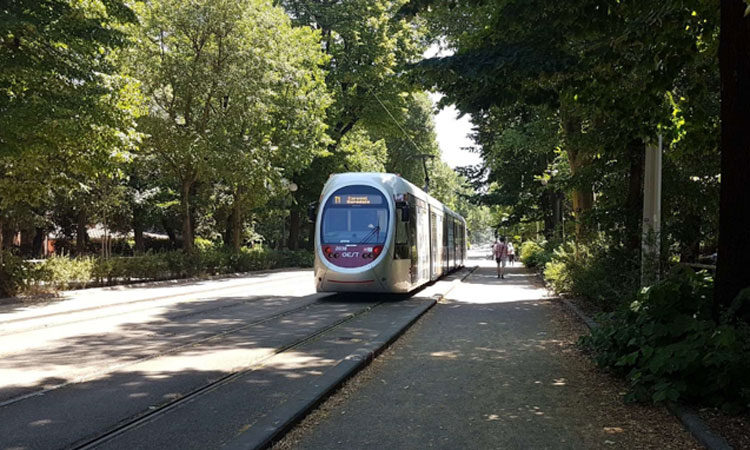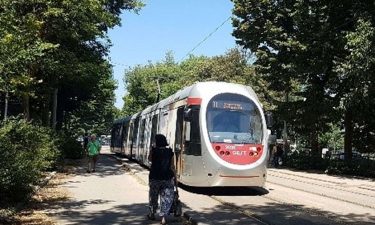Improving public transport networks with distributed big data analytics
- Like
- Digg
- Del
- Tumblr
- VKontakte
- Buffer
- Love This
- Odnoklassniki
- Meneame
- Blogger
- Amazon
- Yahoo Mail
- Gmail
- AOL
- Newsvine
- HackerNews
- Evernote
- MySpace
- Mail.ru
- Viadeo
- Line
- Comments
- Yummly
- SMS
- Viber
- Telegram
- Subscribe
- Skype
- Facebook Messenger
- Kakao
- LiveJournal
- Yammer
- Edgar
- Fintel
- Mix
- Instapaper
- Copy Link
Posted: 13 February 2020 | Eduardo Quiñones - Barcelona Supercomputing Center (BSC) | No comments yet
Eduardo Quiñones, Senior Researcher at the Barcelona Supercomputing Center and ELASTIC project coordinator, explains how the European project ELASTIC will form the technological basis for advanced mobility systems and autonomous transport networks.


The ELASTIC project is developing a software architecture for extreme-scale big data analytics applied to fog computing, that incorporates a novel elasticity concept capable of efficiently distributing data-analytics workloads across the compute continuum (from edge to cloud) while guaranteeing the non-functional requirements inherited from the cyber-physical interactions of the system.
The ELASTIC software architecture aims to form the technological basis to connect advanced mobility systems and smart cities. This innovative model is being tested in a real use-case in the urban area within the City of Florence, Italy. The data generated by sensors and cameras located in the city, the tram network and the tram vehicles themselves, is collected and processed using advanced hardware architectures and connectivity technologies. The goal is to improve the performance of public transport and the overall transportation experience within cities.
With a budget of €5.9m funded by the European Union’s H2020 research and innovation programme under the grant agreement Nº 825473, ELASTIC is coordinated by the Barcelona Supercomputing Center (BSC). The rest of the partners include IKERLAN, Polytechnic of Porto – School of Engineering (ISEP), Information Catalyst (ICE), SIXSQ, THALES SA, THALES Italia SPA, Gestione Ed Eserizio del Sistema Tranviario SPA (GEST), Citta Metropolitana di Firenze.
Towards the distribution of data analytics across the compute continuum
The ELASTIC project is set in the context of fog computing – an extended version of cloud computing to the network edge – and is suitable for Internet of Things (IoT) and autonomous systems applications that require fulfilling non-functional requirements such as the need of processing big-data in real-time with a constrained energy budget.
Current big-data software architectures execute most of the data analytics computation into powerful cloud services, which heavily affects the capabilities of the system to provide real-time guarantees. This approach also imposes the need of increasing the level of security to minimise potential attacks while the data is being transferred to cloud, which may end up affecting the overall safety assurance levels.
The ELASTIC technology addresses these challenges by efficiently distributing the big-data computation across the compute continuum in a holistic way, taking into account real-time, energy efficiency and security requirements.
Overall, ELASTIC aims to provide the technological background for the development of new and safe autonomous mobility services.
A real smart city use case in Florence


ELASTIC’s innovative framework is being employed in the public tram network in the city of Florence, Italy. By enhancing the sensing capabilities of the tramway vehicles and the city, advanced mobility applications are being developed. These applications aim for an enhanced interaction between the city and public vehicles, and a safer and smarter urban mobility environment, with reduced accidents, traffic improvement, and reduced maintenance costs.
Specifically, ELASTIC model will be demonstrated in the T1 tramway line of Florence, where tram vehicles are being equipped with a variety of sensors and detectors. This complex infrastructure will allow us to collect data from the vehicles and tram stations, such as obstacles in front of the trams, travel speed and energy conditions, arrival and departure times, upon which valuable knowledge will be extracted across the compute continuum, guaranteeing the response time of the system and ensuring that data remains anonymous in order to guarantee the privacy of the citizens.
Biography


Related topics
Connected & Autonomous Vehicles, IoT (Internet of Things), Mobility Services, Public Transport
Related modes
Autonomous vehicles
Related cities
Italy
Related organisations
Barcelona Supercomputing Center (BSC)
Related people
Eduardo Quiñones







